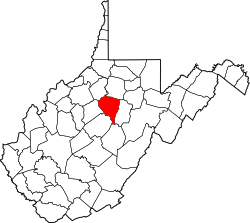Brownsville, West Virginia | |
|---|---|
| Coordinates: 39°0′8″N80°28′33″W / 39.00222°N 80.47583°W | |
| Country | United States |
| State | West Virginia |
| County | Lewis |
| Elevation | 1,073 ft (327 m) |
| Time zone | UTC-5 (Eastern (EST)) |
| • Summer (DST) | UTC-4 (EDT) |
| GNIS ID | 1553995 [1] |
Brownsville is an unincorporated community in Lewis County, West Virginia, United States.


